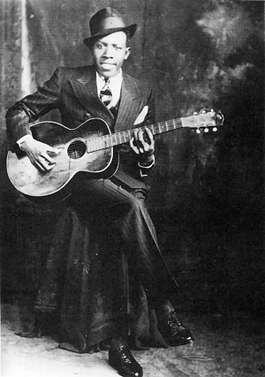Introduction
Nu metal, a genre that emerged in the late 1990s and early 2000s, represents one of the most distinctive and controversial movements in modern rock music. Characterized by its eclectic mix of heavy metal with elements from other genres such as hip-hop, grunge, and alternative rock, nu metal carved out a significant niche in the music landscape. This article delves into the origins, characteristics, impact, and decline of nu metal, exploring its lasting influence on contemporary music.
#### Origins and Influences
Nu metal began to take shape in the mid-1990s, evolving from the broader metal genre. While traditional heavy metal was known for its intricate guitar solos, high-pitched vocals, and elaborate compositions, nu metal introduced a new approach that blended metal with a variety of other styles.
**1. Roots in Heavy Metal and Alternative Rock**
The genre’s foundations can be traced to the evolution of heavy metal and alternative rock. Bands like Korn, who are often credited as pioneers of nu metal, started incorporating elements from alternative rock, grunge, and industrial music into their sound. Korn’s self-titled debut album, released in 1994, showcased a heavy, aggressive sound combined with emotional, often angst-filled lyrics.
**2. Hip-Hop Influence**
One of the most distinguishing features of nu metal is its integration of hip-hop elements. This influence is evident in the rhythmically driven, often groove-based structures and the inclusion of rapped verses alongside traditional metal instrumentation. Bands like Limp Bizkit and Linkin Park exemplify this fusion, where rapped verses and turntables are as central to the sound as the distorted guitars.
**3. Industrial and Electronic Music**
Industrial music’s influence is also notable in nu metal. The use of sampling, electronic textures, and experimental sounds borrowed from industrial bands like Nine Inch Nails contributed to the genre’s distinctive sonic palette. The incorporation of these elements helped create a more layered and dynamic sound that set nu metal apart from its metal predecessors.
#### Characteristics of Nu Metal
Nu metal is defined by several key characteristics that differentiate it from other metal subgenres. These include its sonic features, lyrical themes, and the overall aesthetic.
**1. Sonic Features**
– **Heavy Guitar Riffs**: While nu metal retains the heavy, distorted guitar riffs typical of metal, it often emphasizes rhythm and groove over technical proficiency.
– **Hybrid Vocals**: Vocals in nu metal frequently alternate between singing, rapping, and screaming. This versatility allows for a broad emotional range and dynamic expression.
– **Sampling and Electronics**: The genre often incorporates samples, electronic beats, and synthesizers, blending traditional rock instrumentation with modern production techniques.
– **Groove-Based Rhythms**: Unlike traditional metal’s focus on speed and technicality, nu metal often features groove-heavy rhythms and syncopated beats.
**2. Lyrical Themes**
Lyrical content in nu metal frequently explores themes of alienation, anger, and personal struggle. The genre’s lyrics are often introspective and raw, reflecting the emotional and psychological states of the artists. This focus on personal experience and emotional honesty contributed to its appeal among a generation facing social and psychological challenges.
**3. Aesthetic and Fashion**
The visual style of nu metal bands often reflects the genre’s blend of influences. Band members frequently adopted a fashion style that combined elements from hip-hop culture, such as baggy pants and baseball caps, with the edgy, alternative look typical of rock. This fusion of styles underscored the genre’s boundary-blurring nature.
#### Impact and Popularity
Nu metal reached its peak in popularity during the late 1990s and early 2000s, significantly impacting the music industry and popular culture.
**1. Commercial Success**
The genre achieved significant commercial success, with bands like Korn, Limp Bizkit, Linkin Park, and Slipknot achieving mainstream popularity. Linkin Park’s debut album, *Hybrid Theory* (2000), became one of the best-selling albums of the decade, showcasing the genre’s wide appeal.
**2. Influence on Music and Culture**
Nu metal’s influence extended beyond music into various aspects of popular culture. The genre’s success led to the emergence of numerous bands influenced by its style, contributing to a wave of similar acts in the early 2000s. Additionally, the genre’s fusion of hip-hop and rock opened doors for future collaborations and cross-genre experimentation.
**3. Media Presence**
Nu metal bands frequently appeared on mainstream media platforms, including television, radio, and music festivals. The genre’s visibility in mainstream media contributed to its widespread recognition and influence on a generation of listeners.
#### Decline and Legacy
Despite its initial success, nu metal began to decline in popularity in the mid-2000s. Several factors contributed to this downturn.
**1. Saturation and Backlash**
The genre faced criticism for its perceived over-saturation and formulaic approach. As more bands adopted the nu metal style, critics and fans began to view the genre as lacking innovation. This backlash, combined with changing musical tastes, led to a decline in nu metal’s dominance.
**2. Evolution and Adaptation**
Many nu metal bands evolved their sound or disbanded as the genre’s popularity waned. For instance, Linkin Park shifted towards a more alternative and electronic sound, while Korn explored different musical directions. This evolution reflects the genre’s adaptability and the broader trends in the music industry.
**3. Lasting Influence**
Despite its decline, nu metal’s influence persists in contemporary music. Elements of the genre can be found in various modern rock and metal subgenres, and its legacy continues to resonate with fans of the era. The genre’s fusion of styles and experimental approach laid the groundwork for future genre-blending efforts.
#### Conclusion
Nu metal remains a significant chapter in the history of modern music, characterized by its innovative fusion of metal with other genres. Its rise, peak, and subsequent decline reflect broader trends in the music industry and cultural shifts. While nu metal may no longer dominate the charts, its impact on music and popular culture is enduring, highlighting the genre’s role in shaping contemporary rock and metal music.
metal, a genre that emerged in the late 1990s and early 2000s, represents one of the most distinctive and controversial movements in modern rock music. Characterized by its eclectic mix of heavy metal with elements from other genres such as hip-hop, grunge, and alternative rock, nu metal carved out a significant niche in the music landscape. This article delves into the origins, characteristics, impact, and decline of nu metal, exploring its lasting influence on contemporary music.
#### Origins and Influences
Nu metal began to take shape in the mid-1990s, evolving from the broader metal genre. While traditional heavy metal was known for its intricate guitar solos, high-pitched vocals, and elaborate compositions, nu metal introduced a new approach that blended metal with a variety of other styles.
**1. Roots in Heavy Metal and Alternative Rock**
The genre’s foundations can be traced to the evolution of heavy metal and alternative rock. Bands like Korn, who are often credited as pioneers of nu metal, started incorporating elements from alternative rock, grunge, and industrial music into their sound. Korn’s self-titled debut album, released in 1994, showcased a heavy, aggressive sound combined with emotional, often angst-filled lyrics.
**2. Hip-Hop Influence**
One of the most distinguishing features of nu metal is its integration of hip-hop elements. This influence is evident in the rhythmically driven, often groove-based structures and the inclusion of rapped verses alongside traditional metal instrumentation. Bands like Limp Bizkit and Linkin Park exemplify this fusion, where rapped verses and turntables are as central to the sound as the distorted guitars.
**3. Industrial and Electronic Music**
Industrial music’s influence is also notable in nu metal. The use of sampling, electronic textures, and experimental sounds borrowed from industrial bands like Nine Inch Nails contributed to the genre’s distinctive sonic palette. The incorporation of these elements helped create a more layered and dynamic sound that set nu metal apart from its metal predecessors.
#### Characteristics of Nu Metal
Nu metal is defined by several key characteristics that differentiate it from other metal subgenres. These include its sonic features, lyrical themes, and the overall aesthetic.
**1. Sonic Features**
– **Heavy Guitar Riffs**: While nu metal retains the heavy, distorted guitar riffs typical of metal, it often emphasizes rhythm and groove over technical proficiency.
– **Hybrid Vocals**: Vocals in nu metal frequently alternate between singing, rapping, and screaming. This versatility allows for a broad emotional range and dynamic expression.
– **Sampling and Electronics**: The genre often incorporates samples, electronic beats, and synthesizers, blending traditional rock instrumentation with modern production techniques.
– **Groove-Based Rhythms**: Unlike traditional metal’s focus on speed and technicality, nu metal often features groove-heavy rhythms and syncopated beats.
**2. Lyrical Themes**
Lyrical content in nu metal frequently explores themes of alienation, anger, and personal struggle. The genre’s lyrics are often introspective and raw, reflecting the emotional and psychological states of the artists. This focus on personal experience and emotional honesty contributed to its appeal among a generation facing social and psychological challenges.
**3. Aesthetic and Fashion**
The visual style of nu metal bands often reflects the genre’s blend of influences. Band members frequently adopted a fashion style that combined elements from hip-hop culture, such as baggy pants and baseball caps, with the edgy, alternative look typical of rock. This fusion of styles underscored the genre’s boundary-blurring nature.
#### Impact and Popularity
Nu metal reached its peak in popularity during the late 1990s and early 2000s, significantly impacting the music industry and popular culture.
**1. Commercial Success**
The genre achieved significant commercial success, with bands like Korn, Limp Bizkit, Linkin Park, and Slipknot achieving mainstream popularity. Linkin Park’s debut album, *Hybrid Theory* (2000), became one of the best-selling albums of the decade, showcasing the genre’s wide appeal.
**2. Influence on Music and Culture**
Nu metal’s influence extended beyond music into various aspects of popular culture. The genre’s success led to the emergence of numerous bands influenced by its style, contributing to a wave of similar acts in the early 2000s. Additionally, the genre’s fusion of hip-hop and rock opened doors for future collaborations and cross-genre experimentation.
**3. Media Presence**
Nu metal bands frequently appeared on mainstream media platforms, including television, radio, and music festivals. The genre’s visibility in mainstream media contributed to its widespread recognition and influence on a generation of listeners.
Decline and Legacy
Despite its initial success, nu metal began to decline in popularity in the mid-2000s. Several factors contributed to this downturn.
**1. Saturation and Backlash
The genre faced criticism for its perceived over-saturation and formulaic approach. As more bands adopted the nu metal style, critics and fans began to view the genre as lacking innovation. This backlash, combined with changing musical tastes, led to a decline in nu metal’s dominance.
2. Evolution and Adaptation
Many nu metal bands evolved their sound or disbanded as the genre’s popularity waned. For instance, Linkin Park shifted towards a more alternative and electronic sound, while Korn explored different musical directions. This evolution reflects the genre’s adaptability and the broader trends in the music industry.
**3. Lasting Influence**
Despite its decline, nu metal’s influence persists in contemporary music. Elements of the genre can be found in various modern rock and metal subgenres, and its legacy continues to resonate with fans of the era. The genre’s fusion of styles and experimental approach laid the groundwork for future genre-blending efforts.
Conclusion
Nu metal remains a significant chapter in the history of modern music, characterized by its innovative fusion of metal with other genres. Its rise, peak, and subsequent decline reflect broader trends in the music industry and cultural shifts. While nu metal may no longer dominate the charts, its impact on music and popular culture is enduring, highlighting the genre’s role in shaping contemporary rock and metal music.




